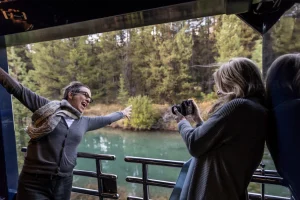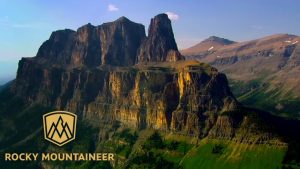Jasper National Park Complete Guide
Nestled in the heart of the Canadian Rockies, Jasper National Park is a breathtaking expanse of rugged peaks, pristine lakes, abundant wildlife, and a must visit stop on the Rocky Mountaineer train journey. Jasper is a place where nature takes center stage and the visitors can enjoy scenic drives like the Icefields Parkway, explore natural wonders such as Maligne Canyon and Maligne Lake, or simply relax under some of the clearest night skies in the world in its famous Dark Sky Preserve.
Jasper National Park is not just a scenic stop; it is a place of global significance and record-breaking stature. Established in 1907, it is a key component of the Canadian Rocky Mountain Parks UNESCO World Heritage Site, a designation received in 1984 in recognition of its exceptional natural beauty and geological importance. At over 11,000 square kilometers, Jasper holds the title of the largest national park in the Canadian Rockies.
Overview
Jasper National Park, Alberta, Canada
Jasper National Park is located in the province of Alberta, Canada, in the northern part of the Canadian Rockies. The park surrounds the town of Jasper and is connected to nearby destinations like Banff via the scenic Icefields Parkway. It’s about a three-hour drive from Edmonton, a five-hour drive from Calgary, and also a popular stop on the Rocky Mountaineer train journey, which links Jasper with Vancouver and Kamloops.
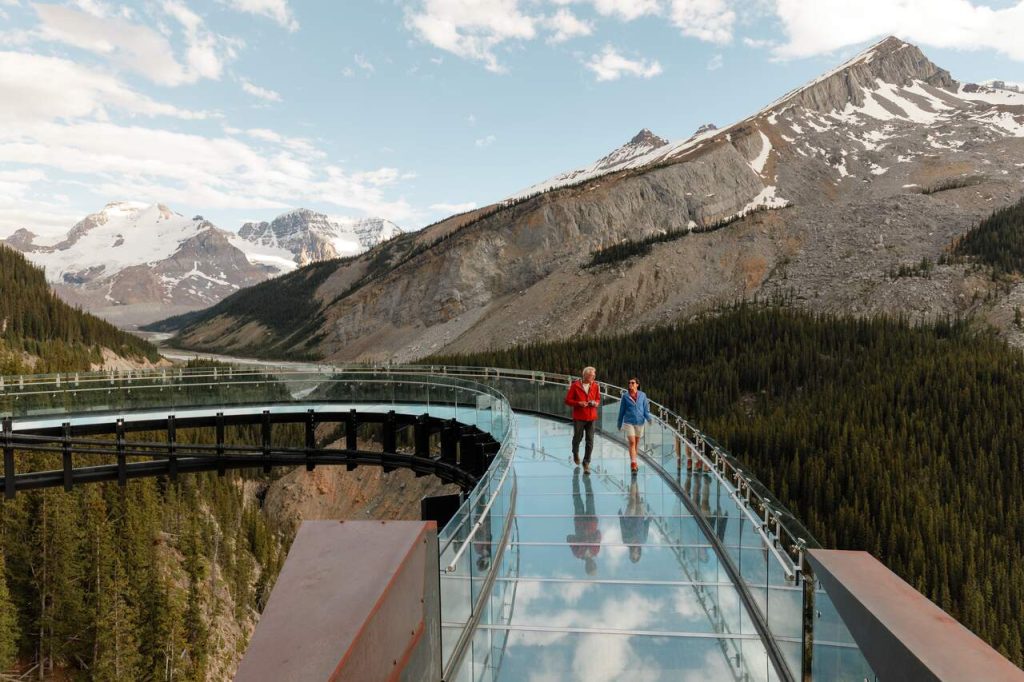
Pass & Reservation
Jasper National Park Pass & Reservation
To visit Jasper National Park, all visitors are required to purchase a Parks Canada entry pass. Passes can be bought at park gates, visitor centers, or online through Parks Canada. Options include daily passes (valid until 4:00 p.m. the next day) and the Discovery Pass, which offers unlimited entry to over 80 national parks and historic sites across Canada for a full year.
In addition to the park pass, some experiences in Jasper require advance reservations. This includes campgrounds, backcountry permits, and popular guided tours. During peak summer months, campsites and accommodations fill up quickly, so booking early is highly recommended.
Quick Tips:
Day passes are ideal for short visits, while the Discovery Pass is cost-effective for longer trips or if visiting multiple parks.
Reservations for campgrounds typically open in January or February each year.
Popular spots like Maligne Lake cruises or backcountry hikes may require additional bookings.
Jasper National Park Wildfire
Jasper National Park Wildfire
In 2024, Jasper National Park experienced a major wildfire that affected parts of the town and surrounding forest. While about 32,700 hectares were burned, Jasper spans more than 11,000 square kilometers, meaning the vast majority of the park—including favorites like Maligne Lake, Maligne Canyon, and the Icefields Parkway—remains as stunning as ever. Recovery efforts have been strong, and most trails, campgrounds, and attractions are open and welcoming visitors in 2025 and onwards.
Is Jasper open for tourism now?
Yes. Jasper is fully open to visitors, with its main attractions accessible and plenty of opportunities to explore.
How much of Jasper National Park burned?
Roughly 32,722 hectares, but this represents only a small portion of the park’s total area. Most of Jasper’s landscapes and experiences remain unchanged.
By visiting Jasper now, travelers enjoy its breathtaking scenery while also supporting the community’s ongoing recovery. Visitors are encouraged to stay informed via Parks Canada’s wildfire updates.
Places to see in Jasper National Park
Places to see in Jasper National Park
Jasper National Park is filled with stunning natural landmarks and scenic spots that showcase the beauty of the Canadian Rockies. Here are some of the highlights worth visiting:
Maligne Lake & Spirit Island
Athabasca Falls
Mount Edith Cavell
Pyramid Lake & Pyramid Mountain
Icefields Parkway
Maligne Canyon
Activities & Things to do
Activities & Things to do in Jasper National Park
Jasper National Park is a stunning destination in the Canadian Rockies, offering a wide range of activities for every type of traveler. From scenic hikes and lake adventures to wildlife viewing and stargazing, there’s no shortage of ways to explore and enjoy this remarkable wilderness.

Camping
Camping in Jasper National Park
Jasper National Park, located in Alberta’s Rocky Mountains, is one of Canada’s premier outdoor destinations. Camping here is a popular way to immerse yourself in the park’s natural beauty, with options ranging from well-equipped campgrounds to remote backcountry sites.
Types of Camping
Frontcountry (vehicle-accessible): These campgrounds are easily reached by car and often provide facilities like washrooms, fire pits, and sometimes showers. They are suitable for tents, trailers, and RVs.
Backcountry (hike-in or canoe-in): For a more adventurous experience, visitors can camp at designated sites reached by trails or waterways. These campsites are more basic but allow for solitude and a closer connection to nature.
Winter camping: Some sites remain open year-round, offering a unique way to experience Jasper’s snowy landscapes.
Reservations
Reservations for both frontcountry and backcountry camping are recommended, especially during the busy summer season. Parks Canada manages bookings through its online system.
Best Time to Camp
The main camping season runs from May to September, when weather is mild and facilities are open. Winter camping is possible but requires preparation for cold conditions.
General Tips
- Be prepared for changing mountain weather.
- Carry bear spray when hiking or camping in the backcountry.
- Obtain fire permits if you plan to have campfires.
- Follow “Leave No Trace” principles to protect the environment.
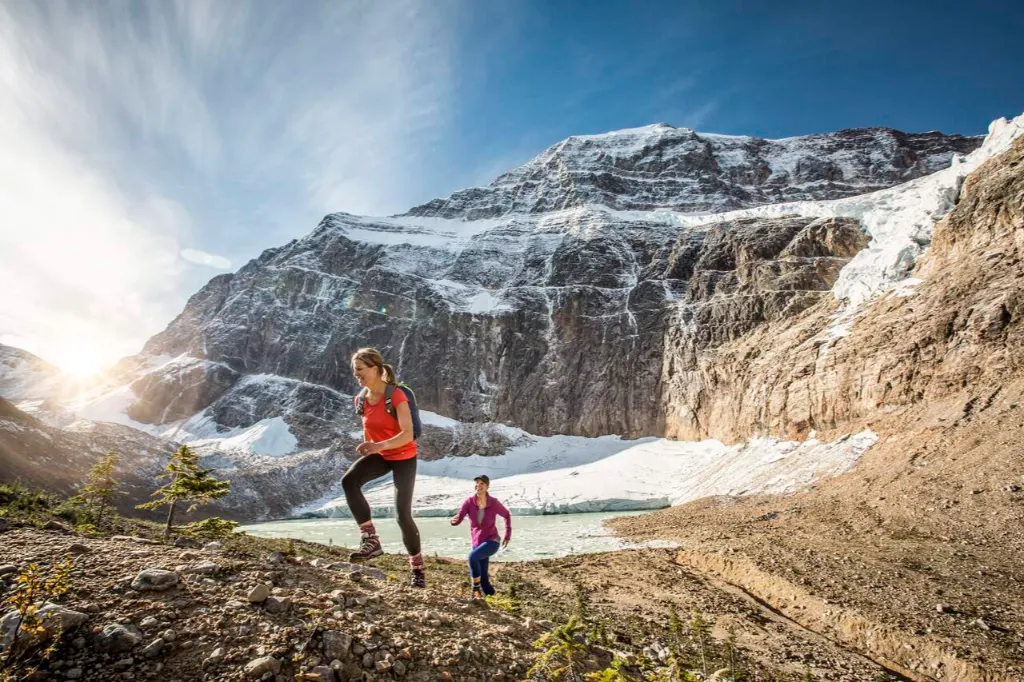
Hiking
Best hikes in Jasper National Park
Jasper National Park is filled with hiking trails that highlight the beauty of the Canadian Rockies. Whether you’re after an easy stroll or a multi-day adventure, there’s something for everyone.
Easy Trails
Maligne Canyon – A short walk through a dramatic limestone gorge with waterfalls and bridges.
Valley of the Five Lakes – A gentle loop trail showcasing five lakes, each with unique colors.
Moderate Hikes
Edith Cavell Meadows – Alpine meadows with stunning views of Angel Glacier and surrounding peaks.
Sulphur Skyline – A steep climb leading to panoramic mountain vistas, with Miette Hot Springs nearby.
Multi-Day Treks
Skyline Trail – Jasper’s most famous backcountry hike, with much of the route above treeline.
Tonquin Valley – A remote wilderness experience featuring rugged peaks and the Amethyst Lakes.
No matter which trail you choose, Jasper’s hiking opportunities deliver unforgettable scenery and a true taste of the Rockies.
Other Activities
Jasper National Park Wildlife
Jasper National Park is home to an incredible variety of wildlife, making it one of the best places in Canada for animal viewing.
Visitors may encounter elk, moose, bighorn sheep, and mountain goats, while lucky observers might spot black bears, grizzlies, or wolves roaming the valleys. Bird enthusiasts will also find plenty to admire, from bald eagles to tiny hummingbirds.
To enjoy wildlife safely, it’s important to keep a respectful distance, use binoculars or cameras, and never feed the animals.
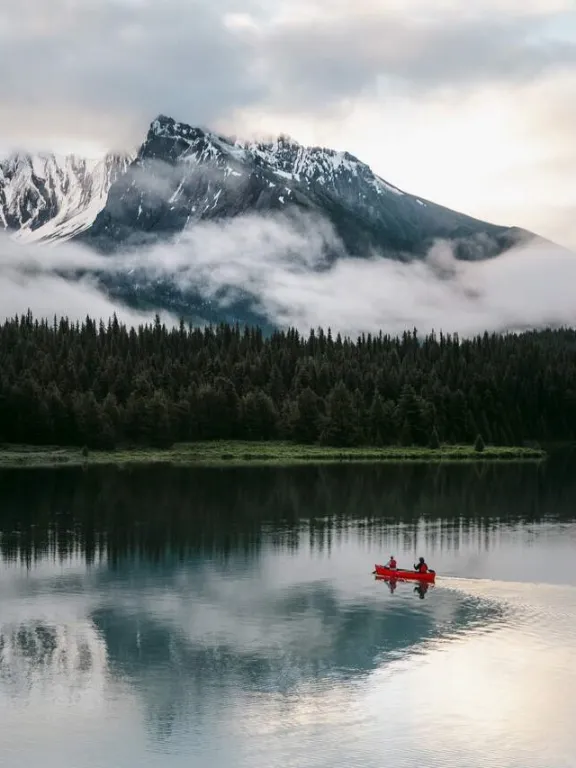

Guided Canoe Tours
Exploring Jasper’s lakes by canoe offers a peaceful and memorable way to connect with nature.
Guided canoe tours are available on lakes such as Pyramid and Maligne, where experienced guides share stories about the park’s history, ecology, and wildlife.
These tours are suitable for beginners and families, with all equipment provided, making them a safe and relaxing way to experience the stunning mountain scenery from the water.
Are dogs allowed in Jasper National Park?
Yes — dogs are welcome in Jasper, but they must be kept on a leash at all times. This protects both wildlife and your pet, since encounters with elk, bears, or coyotes can be dangerous. Dogs are not permitted on some specific trails (such as certain sensitive wildlife areas), so it’s best to check Parks Canada’s guidelines before heading out.
Are there grizzly bears in Jasper National Park?
Yes — Jasper is home to both black bears and grizzly bears. Sightings are common, especially in spring and summer when bears are foraging. Visitors should always carry bear spray, hike in groups where possible, and follow safe food storage practices in campgrounds and backcountry sites.
Can you fish in Jasper National Park?
Yes — fishing is allowed, but you’ll need a National Park fishing permit (provincial licenses are not valid). Anglers can enjoy fishing in Jasper’s lakes and rivers, with species including trout and grayling. Regulations such as catch limits, seasonal closures, and gear restrictions apply, so it’s important to review Parks Canada’s fishing rules before casting a line.

Food & Cuisine
Culinary experience at Jasper National Park
Jasper National Park isn’t just about mountains and wildlife—it also offers a variety of food and dining experiences to enjoy after a day of exploring. Visitors can find everything from cozy cafés and family-friendly restaurants to upscale dining rooms featuring locally sourced ingredients. Many eateries in Jasper town serve hearty Canadian favorites like Alberta beef, wild game, and fresh trout, along with international cuisine to suit every taste.
Whether you’re grabbing a quick coffee and pastry before hitting the trails or enjoying a gourmet meal with mountain views, the food scene in Jasper adds flavor to your Rocky Mountain adventure.
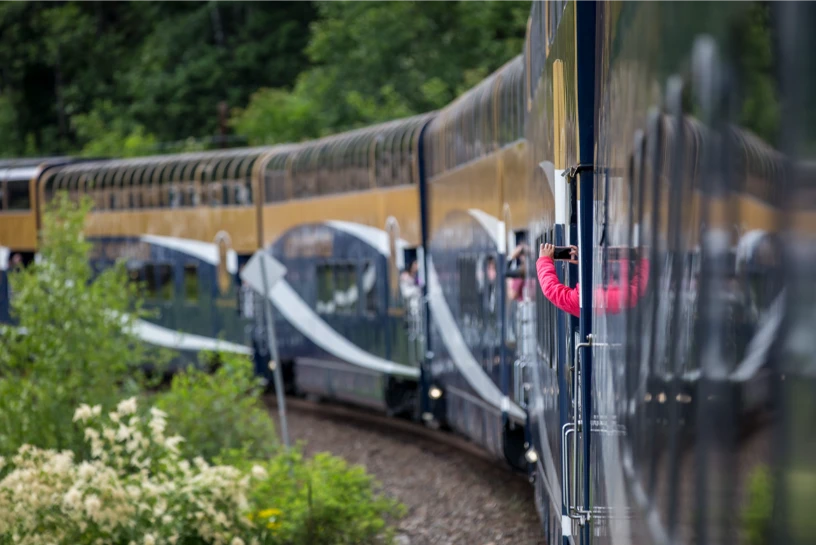
Getting to Jasper National Park?
How to Get to Jasper National Park?
Jasper National Park is located in Alberta, Canada, in the heart of the Rocky Mountains. While it feels wonderfully remote, it’s still accessible by car, bus, or train.
By Train (Rocky Mountaineer or VIA Rail)
VIA Rail’s Canadian route connects Jasper with Edmonton, Vancouver, and Toronto, offering a scenic rail journey through the Rockies. The Jasper train station is located right in town. The Rocky Mountaineer also offers luxury train journeys to Jasper, most famously the Journey through the Clouds route from Vancouver.
By Car
The most common way to reach Jasper is by driving. From Edmonton, it’s about a 4-hour drive (365 km) west on Highway 16. From Calgary, the trip takes around 5 hours (412 km) via the Icefields Parkway (Highway 93) — one of the most scenic drives in the world. Travelers from Banff can also continue north along the Icefields Parkway for about 3.5 hours.
By Air
Fly into Edmonton (YEG) or Calgary (YYC) and continue by car, shuttle, or rail to Jasper. Distances above help with planning your onward drive.
Other Places Worth Exploring in the rockies
Jasper is only the beginning of your Canadian Rockies adventure. From the stunning peaks of Banff National Park to the glacial lakes of Yoho and the charming mountain town of Canmore, there’s so much more to discover beyond Jasper’s borders.
Whether you’re planning a scenic road trip along the Icefields Parkway or looking for hidden gems off the beaten path, our Canadian Rockies Guide has you covered.
Travel Tips & Tricks
Travel Tips & Tricks for Visiting Jasper
Book Early – Jasper is one of Canada’s most popular parks, and campgrounds, hotels, and tours often fill up months in advance, especially in July and August.
Visit in Shoulder Seasons – Late spring (May–June) and early fall (September) offer fewer crowds, cooler weather, and stunning scenery.
Wildlife Safety First – Always keep a safe distance from animals, carry bear spray when hiking, and store food properly in campgrounds.
Pack for All Weather – Mountain conditions can change quickly; bring layers, even in summer.
Drive the Icefields Parkway – This world-famous highway between Jasper and Banff is a must, with endless viewpoints and short hikes along the way.
National Park Pass Required – All visitors need a Parks Canada pass, available online or at park gates.
Stay Connected (or Disconnect!) – Cell service can be limited in some areas; download maps and info before heading out.
Jasper National Park: FAQs
Jasper National Park: FAQs
What's better, Banff or Jasper?
It depends on what you’re looking for. Banff National Park is more developed, with a lively town, luxury resorts, and easier access to attractions, making it great for first-time visitors and those who want plenty of amenities.
Jasper National Park, on the other hand, is quieter and less crowded, with a wilder, more rugged feel and more opportunities to spot wildlife. Both parks are stunning, and many travelers choose to visit both along the Icefields Parkway — one of the most scenic drives in the world.
Can you see the northern lights in Jasper National Park
Jasper is a Dark Sky Preserve, making it one of the best places in Canada to stargaze and occasionally view the aurora borealis.
What airport is closest to Jasper National Park?
The closest major international airport is Edmonton International Airport (YEG), about 365–370 km (≈4 hours) east of Jasper by road
Calgary International Airport (YYC) is another option, located roughly 404 km (≈4.5–5 hours) southeast of Jasper
There are also local airports much closer—like the Jasper Airport (YJA) and Jasper-Hinton Airport (YJP)—but these are small airstrips only used for private flights, charters, or emergency services, and not for regular commercial passenger travel en.wikipedia.org+6
When is the best time to visit Jasper National Park?
The most popular months are June to September for warm weather and open trails. May and October are quieter with fewer crowds, while winter offers excellent skiing and snowshoeing.
Plan your trip now
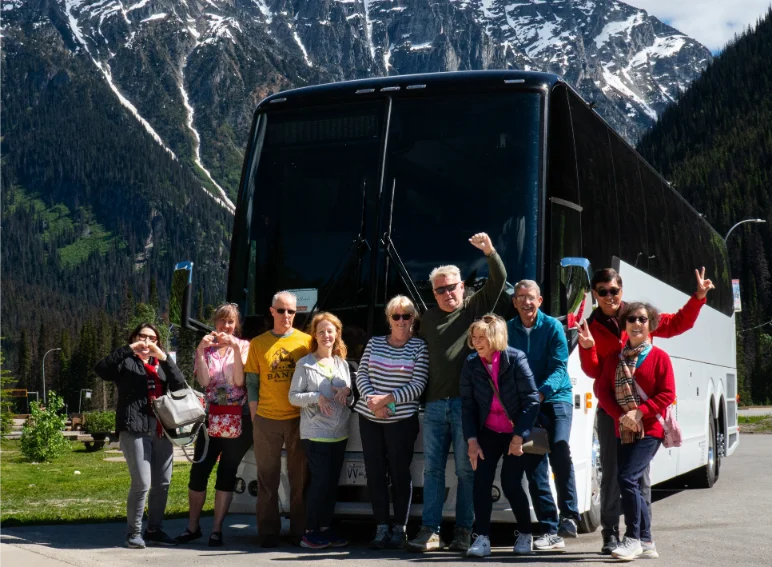
Plan your trip now
Jasper National Park is a destination that truly has it all — stunning mountain landscapes, abundant wildlife, endless outdoor adventures, and a welcoming alpine town. Whether you’re hiking scenic trails, paddling on turquoise lakes, stargazing in the Dark Sky Preserve, or simply soaking in the fresh mountain air, Jasper offers experiences you’ll remember for a lifetime.
To make your journey even more memorable, consider arriving in style on the Rocky Mountaineer or booking one of our comfortable coach tours that showcase the very best of the Canadian Rockies. Let us take care of the details while you sit back, relax, and enjoy everything Jasper National Park has to offer.
Book your Rocky Mountain adventure today and start planning your trip to Jasper National Park!
Table of Contents
Tours to Jasper & Beyond
VANCOUVER TO JASPER
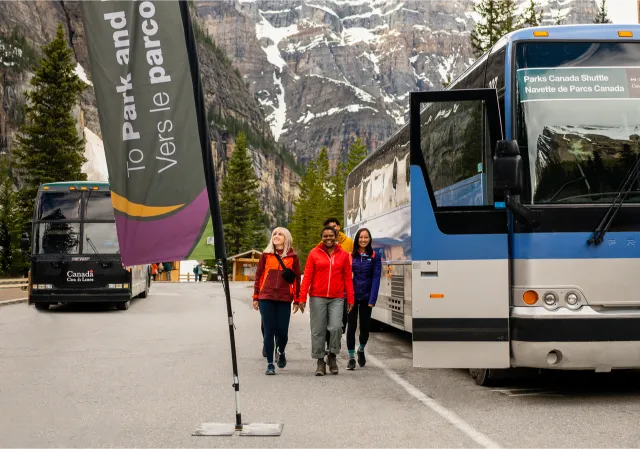
Rocky Mountaineer 2 Day Trip
- 2 Days / 1 Night
- One-way Rocky Mountaineer rail tour
- Day 1: Vancouver to Kamloops
Day 2: Kamloops to Jasper - Fraser Canyon, Albreda Glacier and magnificent Pyramid Falls, majestic Mount Robson
- Includes: 2-day Rocky Mountaineer train, 1 night hotel accommodation in Kamloops, 2 breakfasts, 2 lunches and more
NORTH VANCOUVER TO JASPER
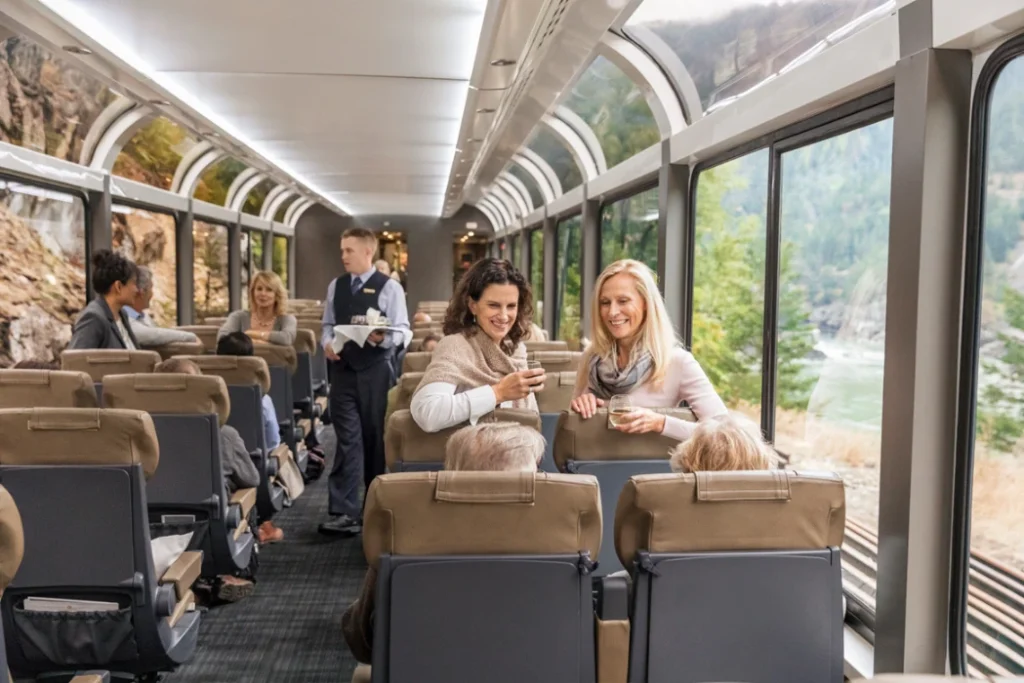
Rocky Mountaineer 3 Day Trip
- 3 Days / 2 Night
- One-way Rocky Mountaineer rail tour
- Day 1: Vancouver to Whistler
- Day 2: Whistler to Quesnel
- Day 3: Quesnel to Jasper
Fraser Canyon, Seton Lake, Yellowhead Pass, Rocky Mountain Trench - Includes: 3-day Rocky Mountaineer train, 2 nights hotel accommodation in Whistler and Quesnel, 3 breakfasts, 3 lunches and more
TORONTO TO JASPER
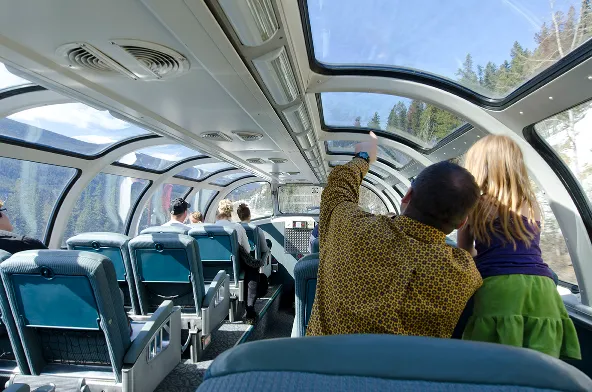
7 DAYS/6 nIGHTS vIA rAIL + cOACH
- Tour ends in Vancouver
- VIA train from Vancouver to Jasper
- Coach tour from Jasper to Vancouver
- VIA Train: 2 days, 1 night
Bus tour: 3 days, 3 nights - Includes: 1 night VIA Rail SLEEPER PLUS Cabin accommodation, 3 nights of hotel accommodation, 4 breakfast and more..


